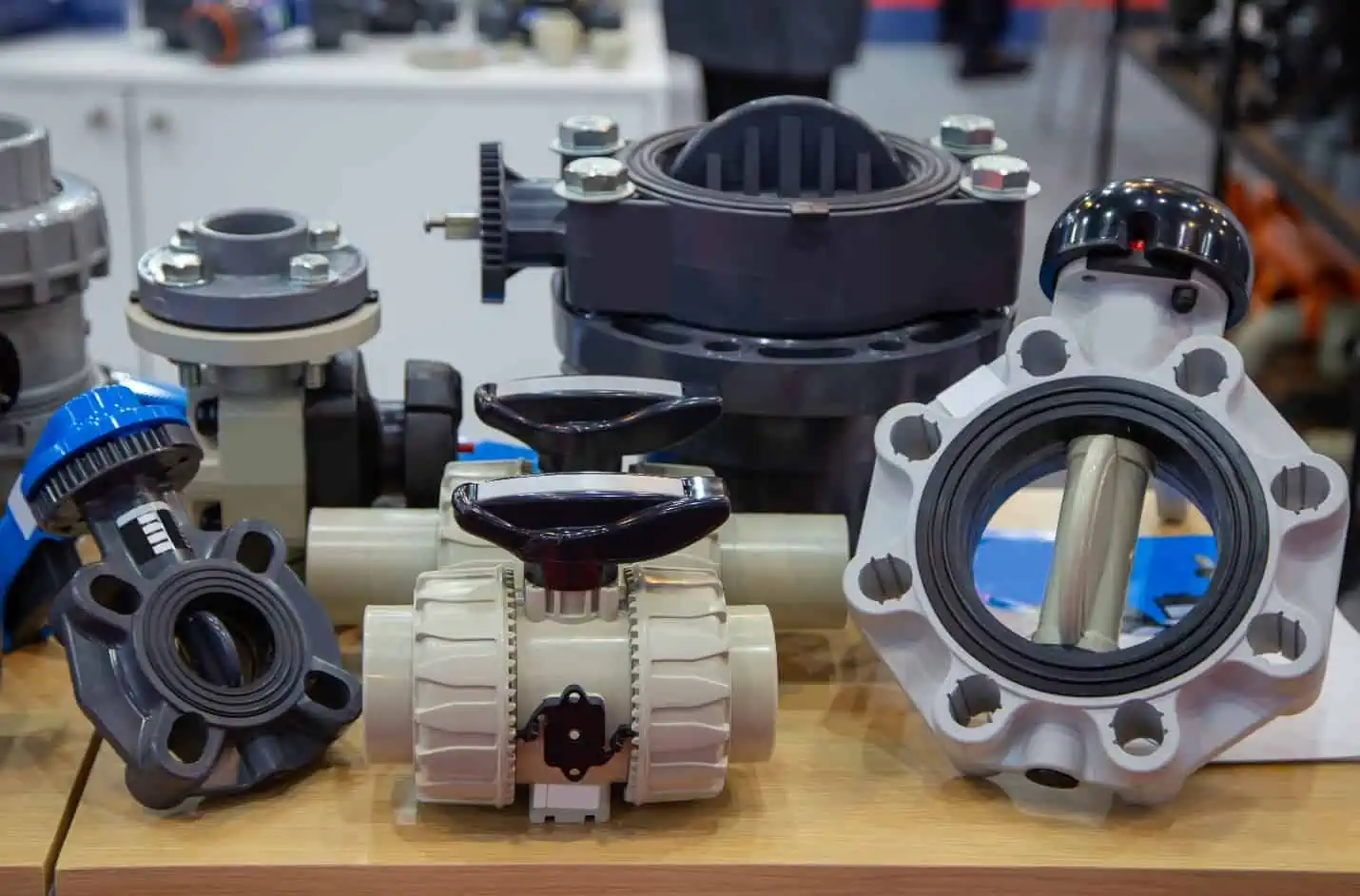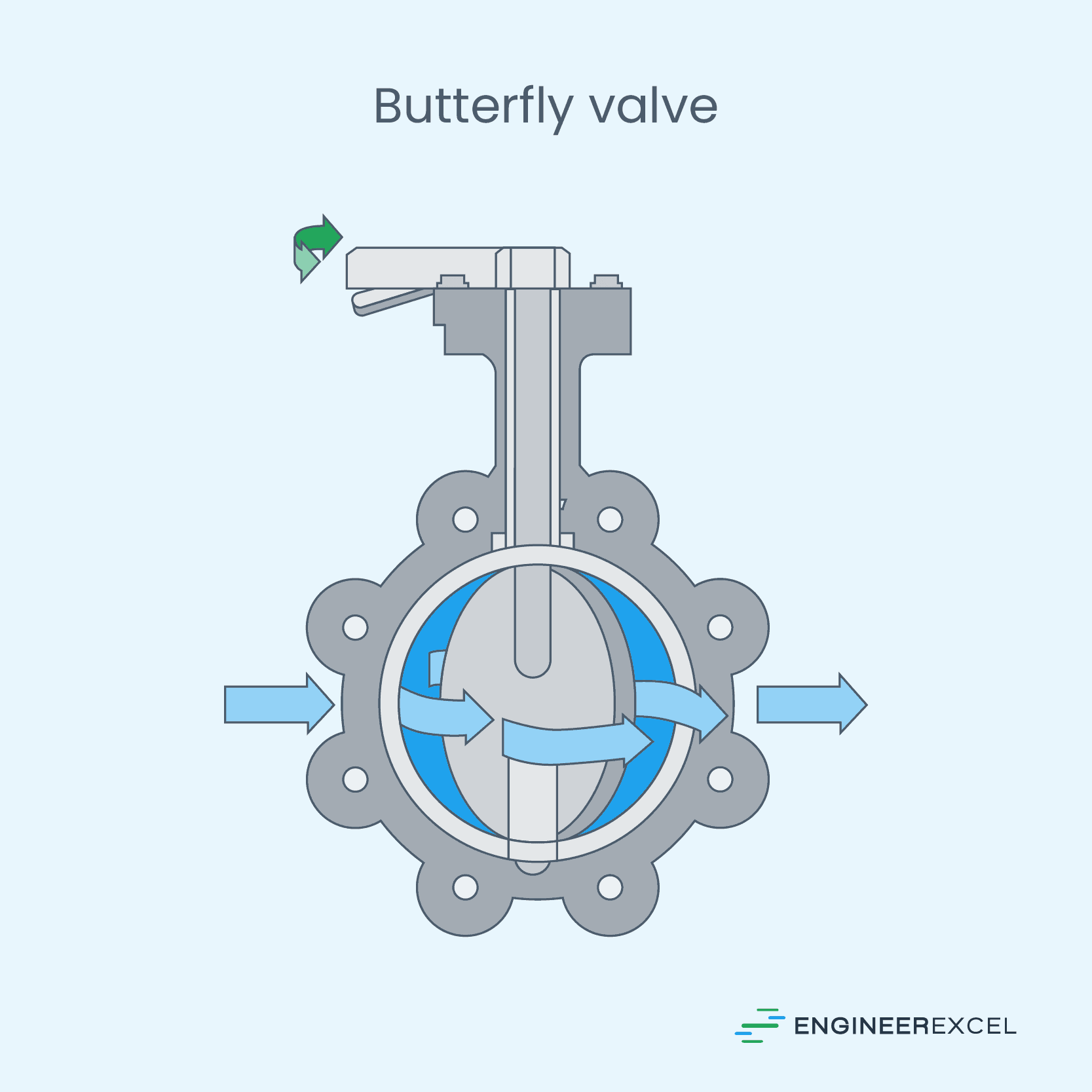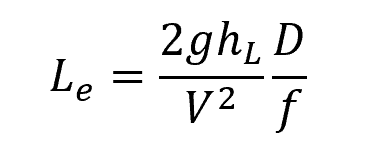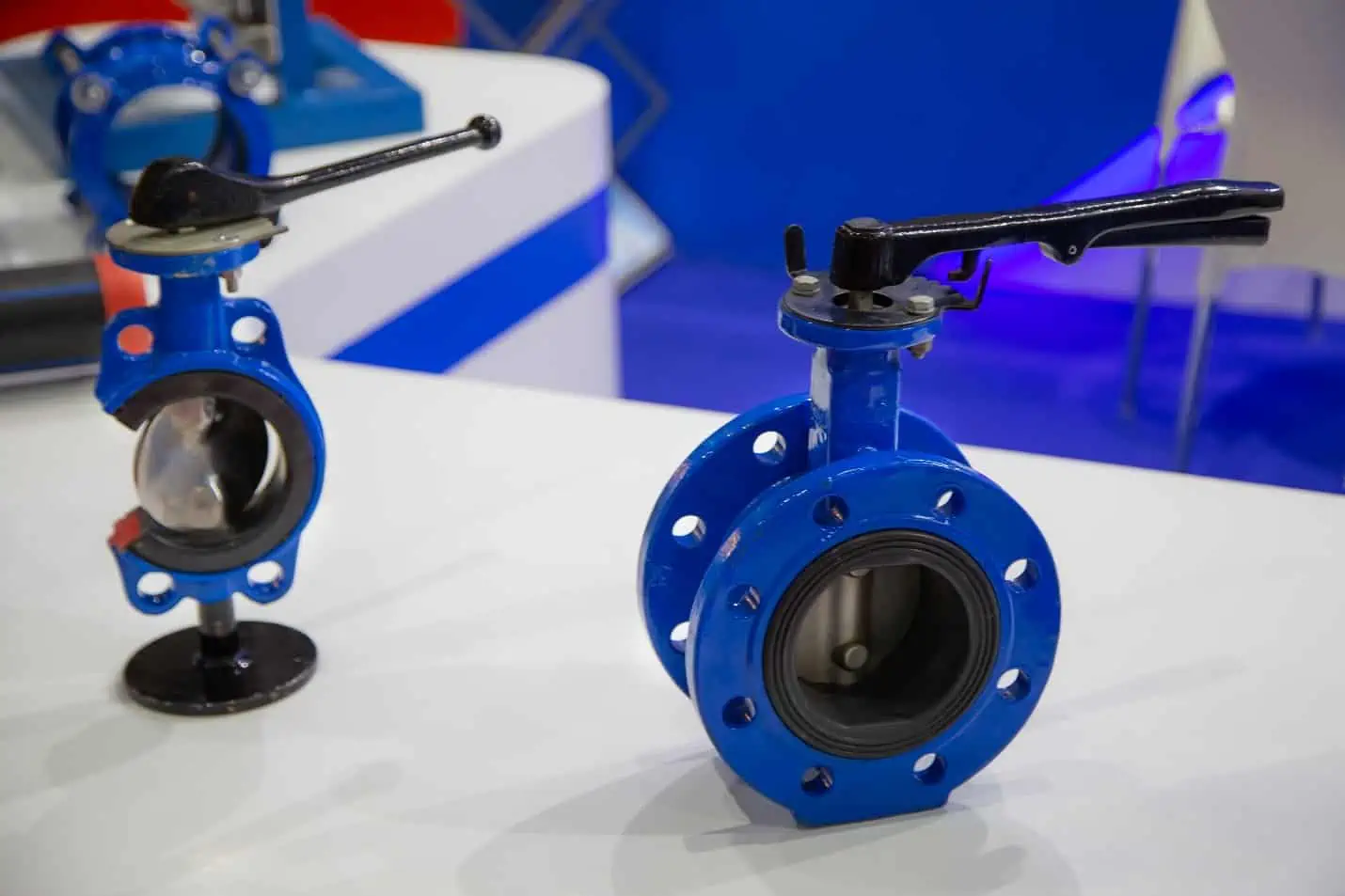Butterfly valves, like any other type of valve, can contribute to the pressure losses in a piping system that may impact the system’s performance. To measure these losses, one of the commonly used methods is the equivalent length method.

Continue reading to learn about the calculation and applications of the equivalent length of butterfly valves.
Equivalent Length of Butterfly Valves
A butterfly valve is a type of valve that uses a circular disc that rotates around a central axis to control the flow of fluid. When the disc is turned perpendicular to the flow, it blocks the fluid, and when it is parallel, it allows the fluid to pass through.
The diagram below shows a typical butterfly valve.

Elevate Your Engineering With Excel
Advance in Excel with engineering-focused training that equips you with the skills to streamline projects and accelerate your career.

Butterfly valves are commonly used due to their lightweight, compact design and ease of operation. They are often used in applications where quick and frequent shut-off is required, such as in water distribution, chemical processing, and power generation.
However, like pipes and other valves, installing a butterfly valve can create additional flow restrictions that contribute to pressure losses in a fluid transportation system. As the fluid passes through the valve, it changes velocity, which leads to turbulence and friction that result in a drop in pressure.
The degree of pressure loss depends on factors such as the butterfly valve’s structure and size and the fluid’s flow rate and viscosity. Therefore, it is crucial to consider its impact on pressure loss when designing a piping system to ensure efficient and effective operation.
One method to do this is using the equivalent length method. This method utilizes the fact that pipes also induce pressure losses in a system. The equivalent length of a butterfly valve refers to the length of straight pipe that would hypothetically cause the same pressure drop as the butterfly valve.
Obtaining the equivalent length allows for the analysis and comparison of the pressure loss caused by the butterfly valve in the same terms as the straight pipes, which can make calculations more uniform and analysis easier in some cases.
The equivalent length of these valves can be found in various sources, including manufacturer’s catalogs and industry standards such as ASHRAE Handbook – HVAC Applications, ASME PTC 46-2005, and ISA 75.01-2007.
An example table is below based an on Le/D ratio of 40.
| Diameter (inches) | Butterfly Valve Equivalent Length (feet) |
| 2 | 6.7 |
| 3 | 10.0 |
| 4 | 13.3 |
| 6 | 20.0 |
| 8 | 26.7 |
| 10 | 33.3 |
| 12 | 40 |
Note that these values are estimates and may vary depending on the specific valve design and installation conditions. It is always recommended to consult manufacturer’s catalogs or industry standards for more accurate information.
Calculating the Equivalent Length of Butterfly Valve
In general, the equivalent length of a butterfly valve can be calculated using the following formula:

Where:
- Le = equivalent length of the butterfly valve [m]
- hL = head loss across the butterfly valve [m]
- V = fluid velocity [m/s]
- g = gravitational acceleration [m/s2]
- D = diameter of the pipe [m]
- f = friction factor [unitless]
The friction factor is a dimensionless parameter that quantifies the frictional losses in the straight pipes. This value depends on the Reynolds number and the surface roughness of the internal pipe walls. The higher the friction factor, the higher the frictional losses.
Alternatively, if the loss coefficient of the butterfly valve is known, then its equivalent length can be calculated using the following formula:

Where:
- KL = loss coefficient of the butterfly valve [unitless]
Butterfly valve manufacturers typically provide data on pressure drop and equivalent lengths for their products. However, it is important to note that these values are not solely based on the valve’s design, but also on local flow conditions, as shown in the formula above. Therefore, it is essential to exercise caution when using the method of equivalent lengths, as it may oversimplify the analysis.

After obtaining the butterfly valve’s equivalent length, remember to include it in the total length of the pipeline and the equivalent lengths of all other pipe components before performing total system pressure drop and flow calculations.
Factors Affecting Equivalent Length of Butterfly Valve
The equivalent length of a butterfly valve depends on various factors, including valve type, opening angle, material and surface roughness, and installation conditions.
Valve Type
Butterfly valves come in different types, such as concentric, double offset, and triple offset designs. Each type has a unique construction and performance characteristics, which affect the equivalent length. Make sure to choose the right valve type that suits the specific needs of your application.
Angle Opening
The angle opening of the butterfly valve affects the flow resistance and, consequently, the equivalent length. A partially closed valve generates higher pressure drop and increases the equivalent length compared to a fully open valve. Keep this in mind while configuring the valve operation and controlling the flow rate.
The graph below shows the behavior of the pressure drop across a butterfly valve with respect to the angle of the disc.

Material and Surface Roughness
The materials used for the valve components, such as the disc, seat, and body, influence the equivalent length due to their inherent roughness. Smooth surface materials result in lower flow resistance and shorter equivalent length, while rougher materials increase the head loss and equivalent length. Therefore, consider the material properties when selecting a butterfly valve.
Installation Conditions
Factors like manufacturing tolerances, gasket thickness, and alignment between the valve and pipe can impact the equivalent length. Proper installation and maintenance practices help minimize these adverse effects and ensure optimal valve performance.
